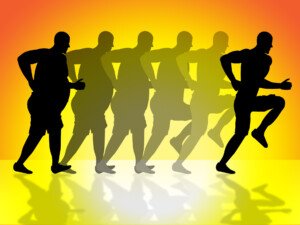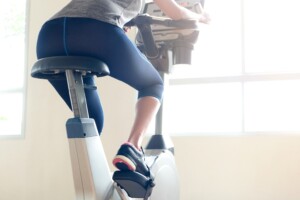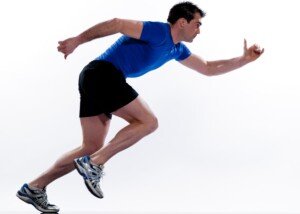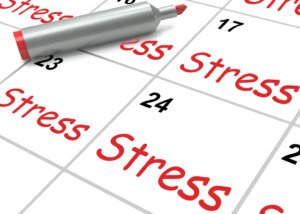
Hormonal exercise is the best way to blast off body fat, no matter how much you have.
Anyone can do hormonal exercise: beginners, old, obese. It saves time too!
Hormonal exercise is not a fad or gimmick. Though the terminology is relatively new in the exercise-world vernacular, hormonal exercise has been around since the dawn of time.
But the loads of studies showing how effective this is for melting off fat are fairly recent.
When fitness trainers speak of hormonal exercise, they have three hormones in mind: human growth hormone, testosterone and lactate.
A hormone is a chemical messenger that gives instructions in the body. The instructions that the three aforementioned hormones give, when a person is doing hormonal exercise, lead to mobilization of fat stores.
There are basically three levels of exercise:
• Steady state, which is also called “slow cardio,” “long duration cardio” and “paced cardio.”
• Moderate—which can be steady state and paced, but the intensity is enough to make it uncomfortable, though it’s sustained.
• Intense—of which there are levels, but the common thread with these levels is that they are not sustainable for long. The duration can last 10 seconds to a few minutes.
Steady State
Slow cardio or duration-based aerobics does not change the hormonal environment in the body. Things stay pretty much the same, as far as chemical messengers.

Shutterstock/Jovan Barajevac
This is why when this exercise is completed, metabolism quickly returns to baseline. Examples: a light impact aerobics class, water aerobics, steady state walking, jogging or pedaling, mild exertion stepping (as in a step class).
Moderate
The level is high enough to trigger increased production of cortisol, the so-called stress hormone, though the exerciser is able to sustain the activity for even one hour.
Examples: high impact aerobics class, brisk hill or incline walking (hands off treadmill!), steady state running, hard pedaling.

Shutterstock/ Seasontime
The general consensus among researchers is that the cortisol blunts fat-burning, which doesn’t make sense if you think in terms of total calories burned doing moderate activity vs. light activity.
But having all that cortisol loose in the body is never a good thing. There certainly is nothing wrong with this kind of training, and many people who favor this level of training are lean and buff. But for someone wanting to slash body fat, it’s not your calling.
Intense
Now here’s where things get exciting. When a person moves as fast or hard as they can, such that it’s impossible to sustain for longer than 30 seconds, something intriguing happens inside their body: The hormonal environment changes.

Shutterstock/Franck Camhi
First off, as with moderate exercise, cortisol levels will increase. BUT…growth hormone and testosterone, once they start kicking up, will neutralize the cortisol!
It starts with production of lactate. This begins what’s sometimes referred to as a metabolic cascade, because it triggers an unleashing of growth hormone and testosterone.
Four minutes’ total of high intensity intervals (30 seconds each, six to eight times) over a 40 minute period (the rest of the time is spent leisurely pacing in between the intervals) will have you feel pummeled.
Whereas, after 40 minutes of light duration cardio…well gee…how do you feel? Hardly hammered. If you do, it wasn’t light; it was moderate.
It certainly wasn’t intense, because by definition, intense is that speed/resistance which you cannot sustain for longer than a few minutes.
The mistake many overweight people make is that they think because they feel worked over after 45 minutes of moderate steady state on the elliptical, that this was “intense” exercise.
Then they wonder why the fat won’t come off. All they produced was cortisol, of which excess amounts in the body have been linked to excess stomach fat.
Hormonal Triple Jackpot
Okay, so with high intensity interval trianing (alternating highly intense intervals with leisure intervals), your body now has growth hormone and testosterone surging through it.
These chemical messengers are the most potent natural fat-burners known to science.

Shutterstock/Vladimir Borozenets
Get this: 24 hours after having done TWO HOURS of long slow cardio on a treadmill, bike or elliptical machine will NOT have burned nearly as much fat as 24 hours after four minutes’ worth of highly intense intervals will have.
That’s two hours on the treadmill just walking or slowly jogging, vs. six to eight, 30-second sprints on the treadmill which leave you heavily panting at the end of those half-minutes.
If you can’t sprint due to size or de-conditioning, no problem: Get on a stationary bike and pedal like a demon so that after 30 seconds, you’re too out of breath to talk.
The Amazing Afterburn
The more trained your body, the longer that the fat-burner hormones will circulate in elevated levels.
A very trained body will enjoy an afterburn exceeding 24 hours after the exercise session is over. This means an elevated resting metabolism during sleep and into the next day!

Freepic/lyashenko
There are other ways to activate these anabolic, fat-burning hormones: intense box jumping, intense jump-rope intervals, eight rounds of 30-second, searing kettlebell swings, and intense strength training.
Hormonal exercise comes in endless permutations, e.g., dashing up hills, or how about a trio of burpees, pushups and switch-lunge jumps?
Obese and older people can get very intense by walking their absolute fastest up high inclines (don’t hold onto the treadmill!) or hills, pedaling or doing kettlebell swings.
They can even eventually jog up inclines (which is a lot easier on the knees than sprinting on flat surfaces).
Hormonal exercise is the best way to burn fat and improve cardiovascular fitness, and there’s tons of science to back this up.


























